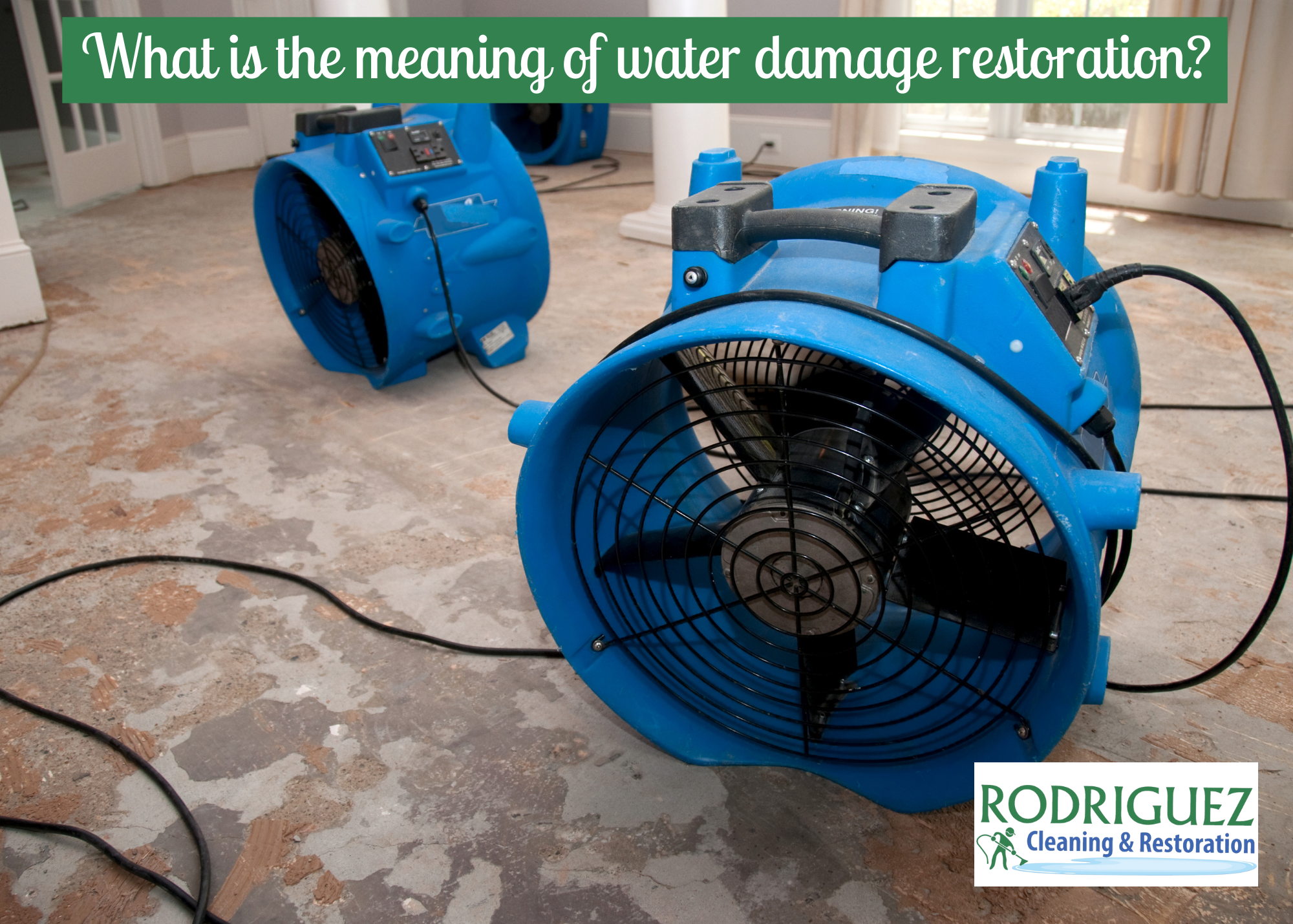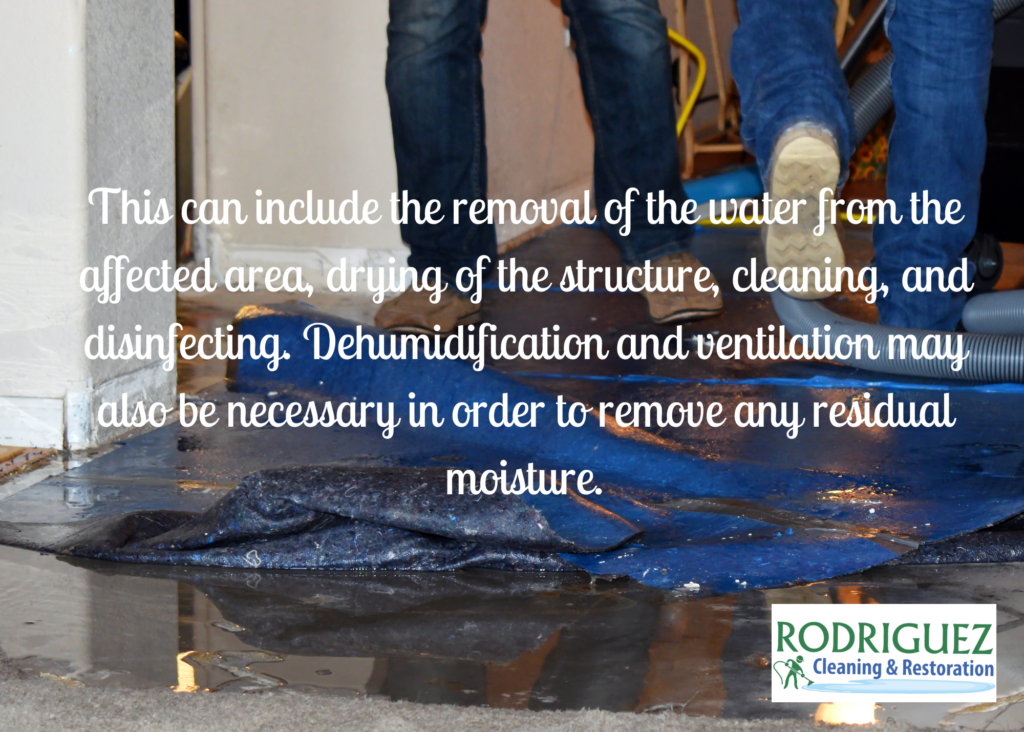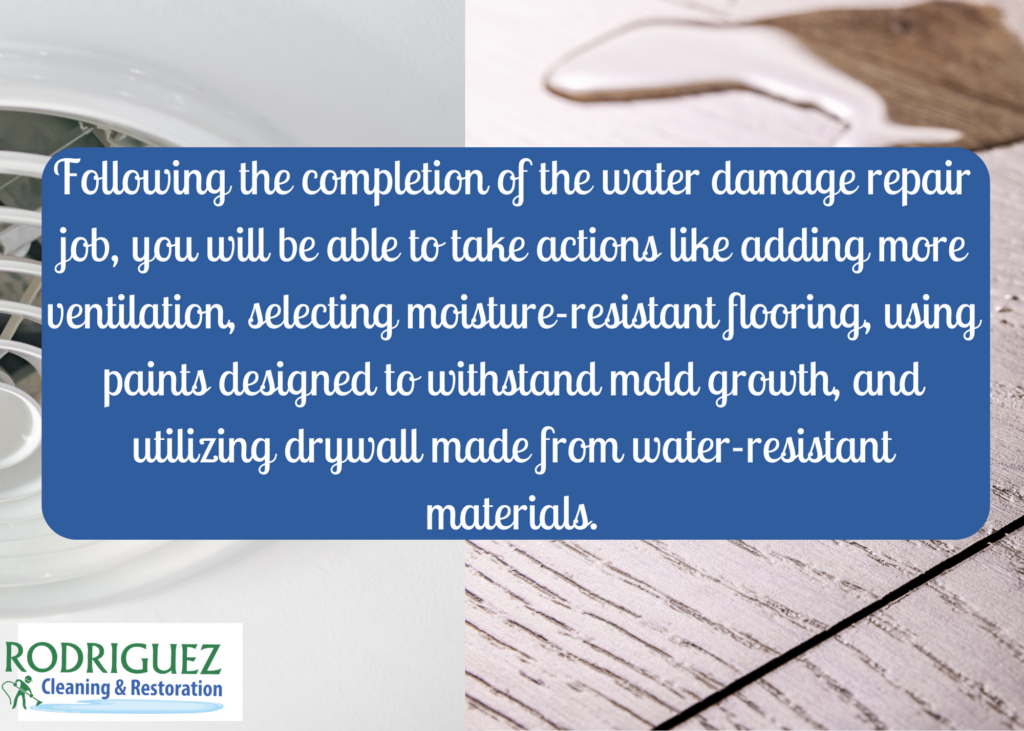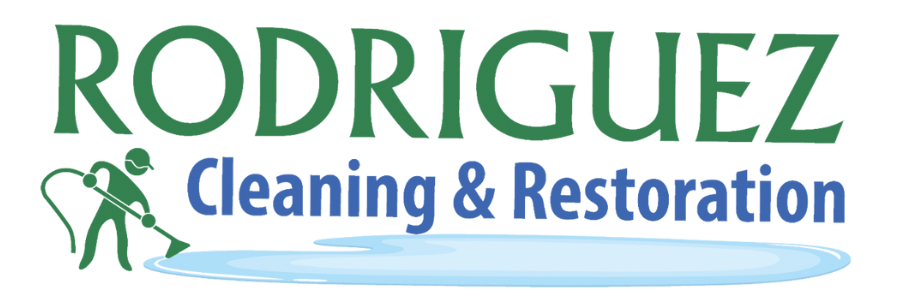What is the meaning of water damage restoration?

This is a professional process that is used to return a water-damaged property back to its pre-loss condition. It involves a number of steps that must be taken, including the initial prevention and correction measures, removal of water, drying of the structure, cleaning, and disinfecting. This is to help ensure that the property is returned to its pre-loss condition. It is a complex process that requires the right tools, skill, and experience. Water damage can be caused by a variety of sources, such as floods, plumbing problems, and broken pipes. Restoring water-damaged property can be a costly and time-consuming endeavor, but it is essential to prevent further damage and maintain the value and integrity of the property.
Water damage can be caused by a number of different sources, such as floods, broken pipes, overflowing sinks and toilets, and other sources of water. When water damage occurs, it is important to take the necessary steps to address the issue immediately. This includes taking steps to prevent further damage, identify the source of the water, and Identify the damage’s extent.
Once the water’s source has been identified and the degree of the damage determined, the water restoration process can begin.
After the area has been dried and cleaned, the restoration process can begin. This may include repairing any damaged areas, replacing flooring, painting, and other necessary repairs, this may require the help of a professional water restoration company. The first step in the restoration of the water is to remove any standing water. In the immediate aftermath of a flood, homeowners should take immediate action to remove as much of the standing water as they can. Because of this, the procedure for repairing water damage will be able to be carried out in a manner that is both effective and efficient in the future. You can get rid of standing water by using buckets or mops, mopping with towels or rags, using large commercial fans and dehumidifiers, opening windows to allow air circulation that will pull moisture out through evaporation, or simply by throwing towels on top of puddles so that they absorb the additional liquid on their own. There is merit in pursuing any one of these approaches. When there is standing water that is drained as soon as possible after the incident that caused it, the process of repairing water damage is simplified. This is true regardless of the method that is utilized.
After all of the standing water has been removed, it is the responsibility of the property owners to take the appropriate actions to remove any things that were damaged by the water. Because it involves disposing of certain types of materials that pose health risks to humans, such as insulation or drywall that has been saturated with stagnant water for more than 48 hours, this process may require the assistance of a professional who specializes in fire and water restoration services. Examples of these materials include drywall that has been soaked in water for more than 48 hours and insulation. It is possible to get rid of the contents of a house that has been flooded in a variety of different methods after the water damage has been repaired. Some firms offer removal services for rubbish, while others specialize in the disposal of debris or in executing comprehensive demolition and reconstruction. Yet others provide services for the removal of waste and perform total demolition and reconstruction. It is crucial to choose a company that is able to handle the removal of potentially dangerous material while looking for a company to perform this procedure.
When all the water damage has been fixed and all potentially contaminated items have been removed from the residence. It is best left in the hands of a skilled specialist who provides restoration services because numerous procedures must be completed for this process to be successful. They regularly employ ozone generators, as well as dehumidifiers, disinfectants, and other similar goods, in the course of their work.
Water restoration is an important process that helps to maintain the health and safety of our environment. It is a process of returning water sources such as rivers, lakes, and wetlands back to their natural state. This is done by removing pollutants, restoring aquatic habitats, and restoring water flow in order to create a healthy ecosystem. Water restoration is essential for preserving the health of our environment, as it helps to protect our drinking water, provides habitats for fish and other wildlife, and keeps natural ecosystems in balance. Water is an essential resource for life, and the health of our water systems is critical to the health of our planet. Unfortunately, our water resources are increasingly under threat from human activities. Pollution, overdevelopment, and climate change are all contributing to the degradation of our aquatic ecosystems. Without proper restoration, these ecosystems could be lost forever, resulting in the destruction of species and habitats, and the disruption of vital ecological processes.
When water damage occurs in your home or place of business, it is essential to take action as soon as possible to repair the damage caused by the water. If you do not, there is a good chance that mold will grow. In order to get rid of the mold and make the environment safe again, mold remediation and cleanup are both important steps. Mold treatment and cleanup involve locating and eliminating any mold that may already be present, as well as cleaning and sterilizing the affected area and repairing any water damage that may have contributed to the problem. It is imperative that the issue be resolved as soon as possible in order to stop the mold from spreading and causing additional damage.
Finding the cause of the water damage is one of the largest restoration challenges. In order to start the restoration procedure, it is crucial to identify the water’s source as quickly as feasible. If the source of the water is not found right away, it could result in further damage and a more expensive restoration effort. For instance, if a leaky pipe is to blame for the water damage, the pipe must be fixed before the restoration procedure can start.
Dealing with the risk for mold growth presents another difficulty for the repair. Water damage frequently results in mold, which can be quite deadly. If left untreated, it can result in structural damage in addition to health problems. Finding the source of the moisture, drying the afflicted area, and getting rid of any mold or mildew are all necessary for dealing with mold growth in a proper manner.
Managing the cost of the restoration process presents a third difficulty. The restoration process can be costly, so it’s crucial to control expenses to stay within your budget. Hiring a professional restoration service, which can offer high-quality service at an affordable price, can help manage costs. Furthermore, it’s critical to keep in mind that the cost of the restoration procedure can change based on the extent of the damage and the challenge of the undertaking.
The possibility of more harm is the final obstacle to this rehabilitation. Many issues, including structural harm, electrical harm, and the requirement for additional repairs, might result from water damage. In order to appropriately handle these potential concerns and stop more harm throughout the restoration process, it is crucial to be aware of them.
In conclusion, the restoration is a complex process that requires the right tools, skill, and experience. There are several challenges associated with water restoration, including identifying the source of the water damage, dealing with the potential for mold growth, managing the cost of the restoration process, and preventing additional damage. By taking the necessary steps to address these challenges, it is possible to successfully restore water-damaged property.



